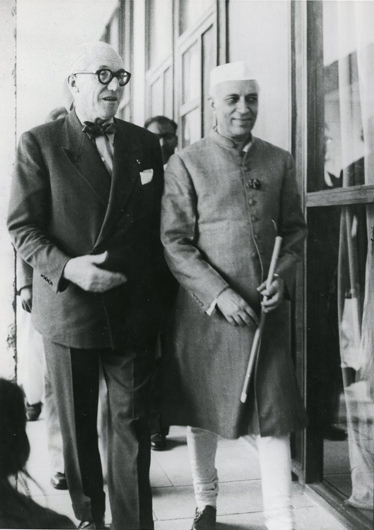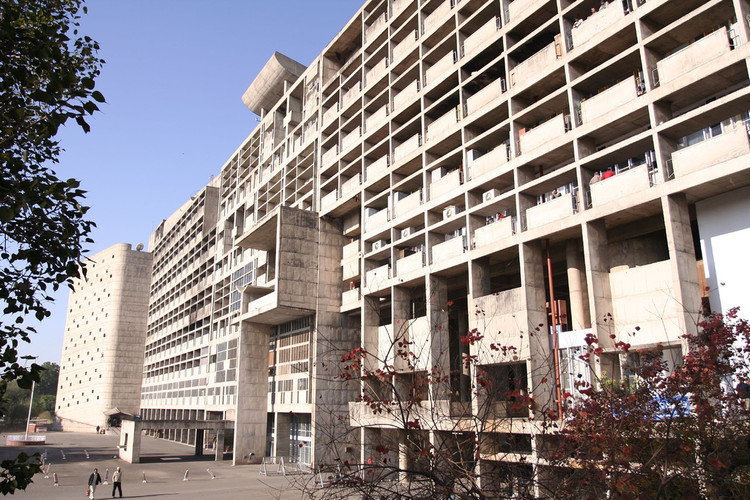6th October 2023. ON THIS DAY.
“The architect determines the diverse movements of our minds and our hearts; it is then that we experience beauty.”
– Le Corbusier
Charles-Edouard Jeanneret-Gris, better known by his name Le Corbusier, was a pioneering Swiss-French architect and designer who specialised in contemporary architecture and urban design. Born on this day in 1887 he is recognised for his ground-breaking methodology, which combined practicality, beauty, and a profound grasp of the human experience in his creations. Le Corbusier is most well-known for his enduring theory of “the house as a machine for living,” which emphasises open layouts, crisp lines, and the use of durable materials like reinforced concrete. His work not only altered the physical landscape but also significantly influenced the conversation about the interplay between society, the environment, and architecture. Architects and designers all throughout the world continue to be inspired by his legacy.

However, even the most genius minds are not unfamiliar with heinous prejudices, which is why as we list down his architectural marvels it is also important to mention his ties to fascism. Recent books, such as “Le Corbusier, un fascisme français” by Xavier de Jarcy and “Un Corbusier” by François Chaslin, discuss the disputed connections between the architect Le Corbusier and fascist groups in Paris in the 1920s. He worked closely with Pierre Winter, the head of the French Revolutionary Fascist Party, on publications for urban planning like “Plans” and “Prelude.” Le Corbusier is accused of supporting Nazi anti-Semitism by Jarcy based on his publications and communications. Additionally, Le Corbusier’s involvement with the Vichy regime during World War II and anti-Semitic sketches ascribed to him were unearthed by Chaslin’s study, both of which were previously unknown.
Le Corbusier Famous Buildings in India

The Chandigarh development plan is just one example of how Le Corbusier’s influence is seen in India. There was a conflict in post-independence India between preserving traditional ways of life and embracing modernity. By bringing modern architecture, Le Corbusier’s creations—including the Chandigarh project—put an end to this controversy. Chandigarh embodied Jawaharlal Nehru’s vision of India as a free nation with hope for the future. Le Corbusier bridged the gap between tradition and development with his monumental structures in Chandigarh and his private residences in Ahmedabad, which exhibited modernity and established a distinct heritage. Here are five of his pieces that were created in India:
1. Secretariat Building, Chandigarh.

In Le Corbusier’s design for the capitol, three interconnecting squares were used to organise a single site’s four buildings and six monuments. However, just three structures—the Secretariat, the Legislative Assembly, and the High Court—represent the functions of democracy. The Governor’s Palace, the fourth, was never built. The Secretariat, a gigantic 254-metre-long and 42-metre-high concrete structure that was finished in 1952, houses the local administrations of Punjab and Haryana. It has an impressive horizontal structure made up of six eight-story blocks joined together by sculptural ramps. It is also named a UNESCO World Heritage Site.
2. Legislative Assembly / Palace of Assembly, Chandigarh.

When designing the Palace of Assembly in Chandigarh, India, Le Corbusier consulted with Prime Minister Nehru. With cosmic and natural elements, the entrance door’s almost 25 square feet symbolises the new India. The structure encourages movement and has a circular assembly room, defying conventional architectural conventions. 2016 saw its designation as a UNESCO World Heritage Site.
3. Palace of Justice / High Court, Chandigarh.

The Punjab and Haryana High Court, a remarkable structure including courtrooms and administrative offices, was created by Le Corbusier. Its imposing entrance, evoking Fatehpur-Sikri’s Buland Darwaza, represents the majesty of the law. The building’s rhythmic facade is offset by the enormous, brightly coloured concrete pylons. A verandah was eventually built into the structure, which was initially intended to serve as a symbol of protection from the sun and rain. For more space, an annexe was also built. Unfortunately, judges no longer utilise the proposed pedestrian esplanade, but rather a motorway entry. This is named a UNESCO World Heritage Site.
4. Museum and Art Gallery, Chandigarh.

During the partition of India, Le Corbusier and his collaborators built the Government Museum and Art Gallery to hold artefacts from the Lahore Museum. It is one of three museum designs by Le Corbusier, and it was constructed between 1962 and 1967. Gandhara sculptures, Pahari miniature paintings, and contemporary Indian art are all on display in this Chandigarh museum. It is a gathering place for tourists, academics, and artists, and it has an auditorium, three levels of exhibition space, and a library. The building’s architectural features are representative of the dominant style in Chandigarh, while a Satish Gujral mural adds colour.
5. Sanskar Kendra Museum, Ahmedabad.

Le Corbusier created the Museum of Knowledge as a component of a larger Cultural Centre in Ahmedabad that included a number of pavilions for various subject areas. The foundation stone for the museum’s construction was set in 1954. It has a climate-friendly design, basic brick and bare concrete façade, and the recognisable pilotis of Le Corbusier. Like other Le Corbusier museum ideas, the interior spaces are plastered, and the layout is for future extension.
Read Also:

Vaishnavi Srivastava is a learning writer, a keen researcher and a literature enthusiast. She is a Sub-editor at Abir Pothi.






